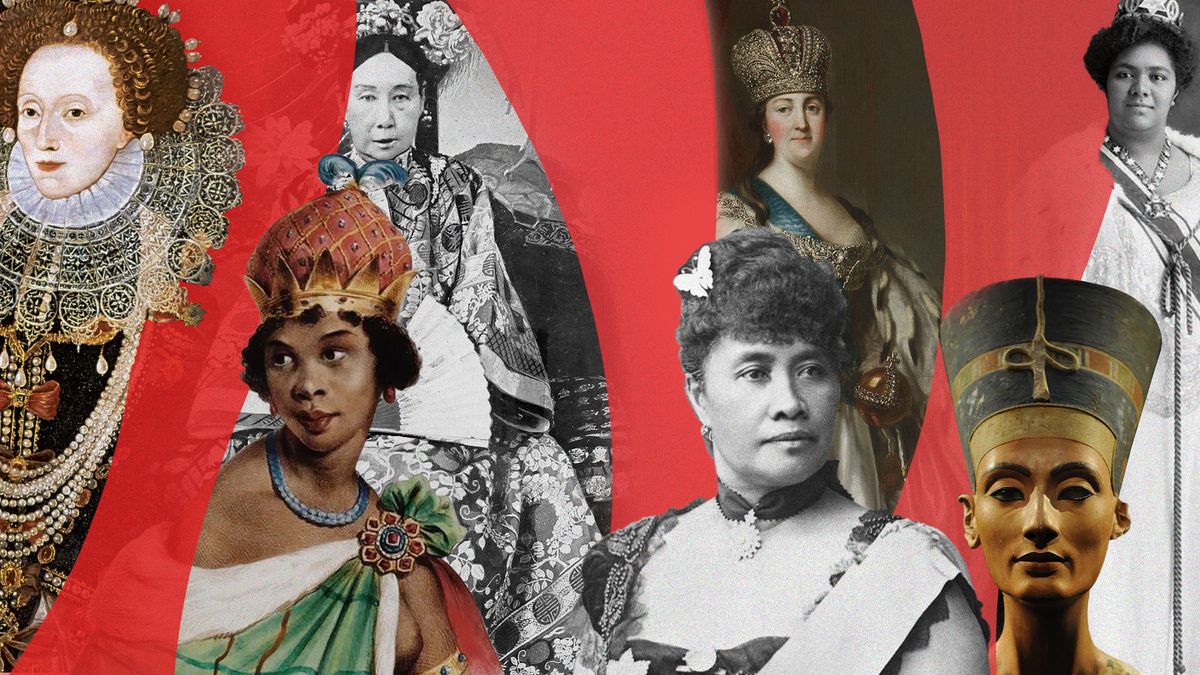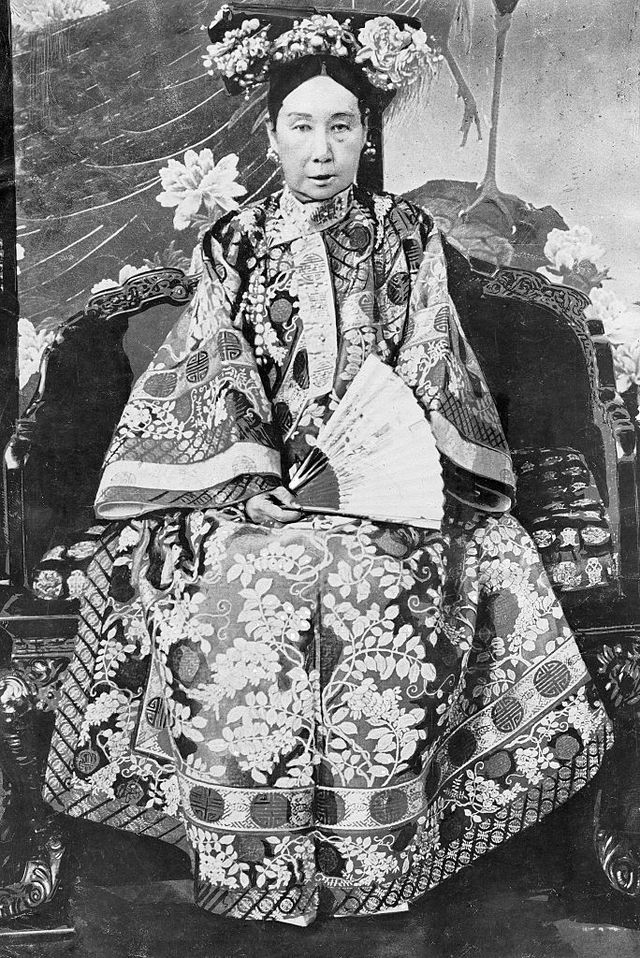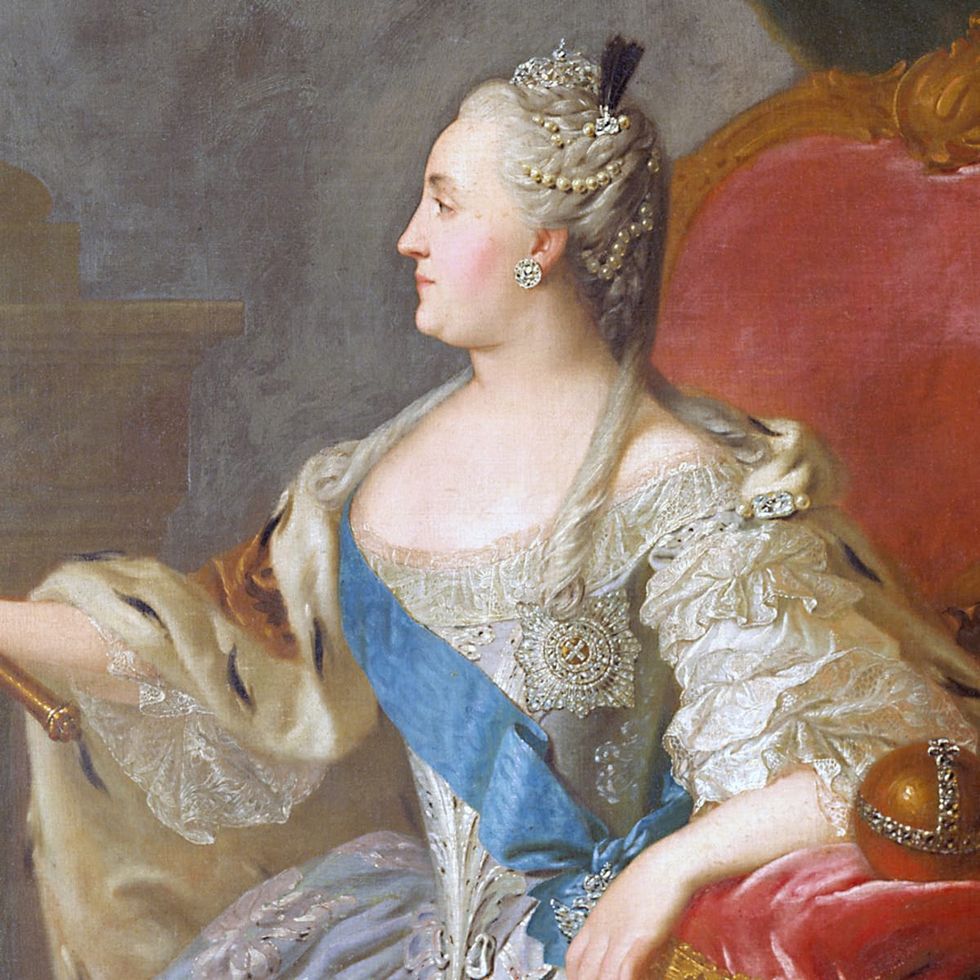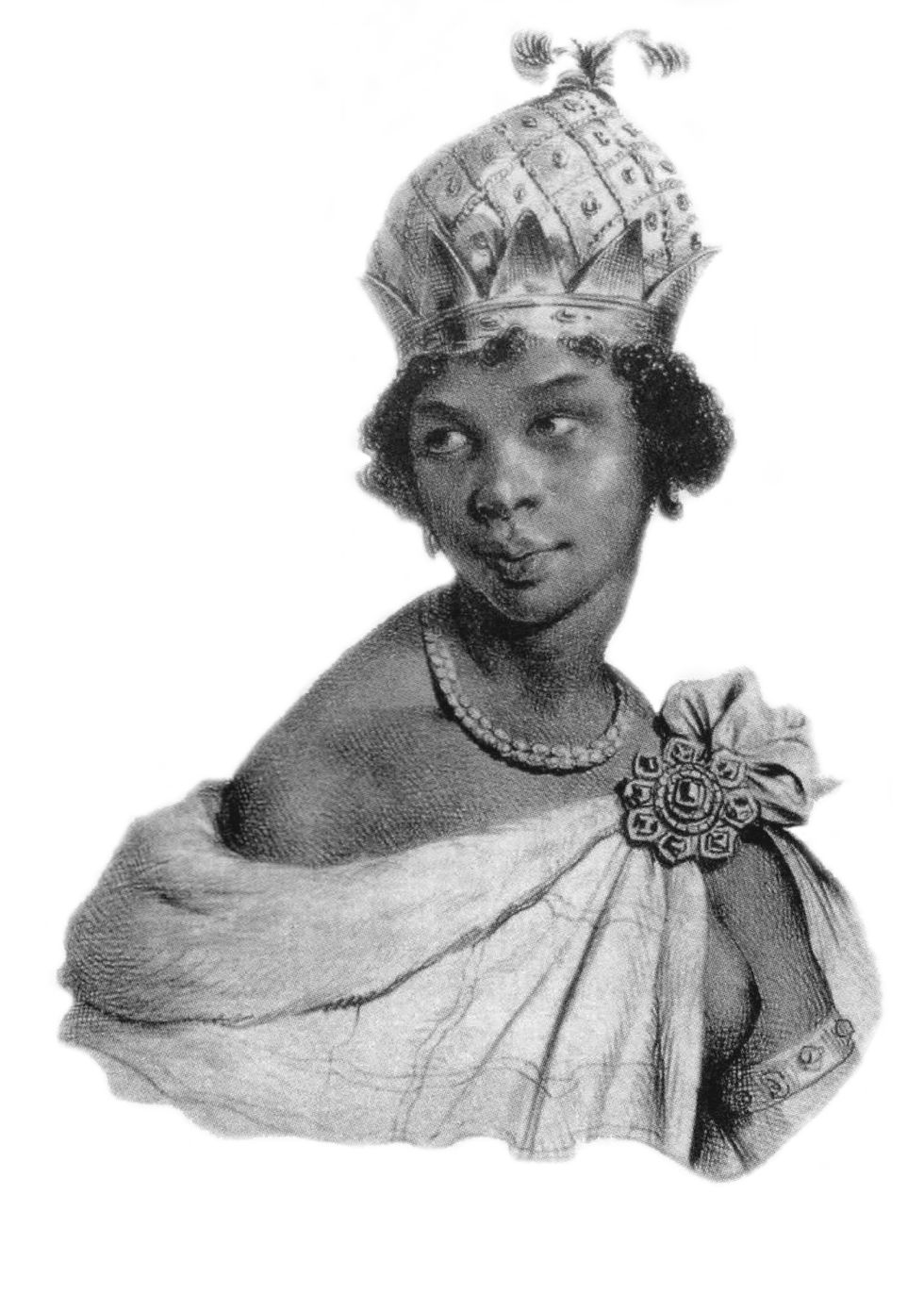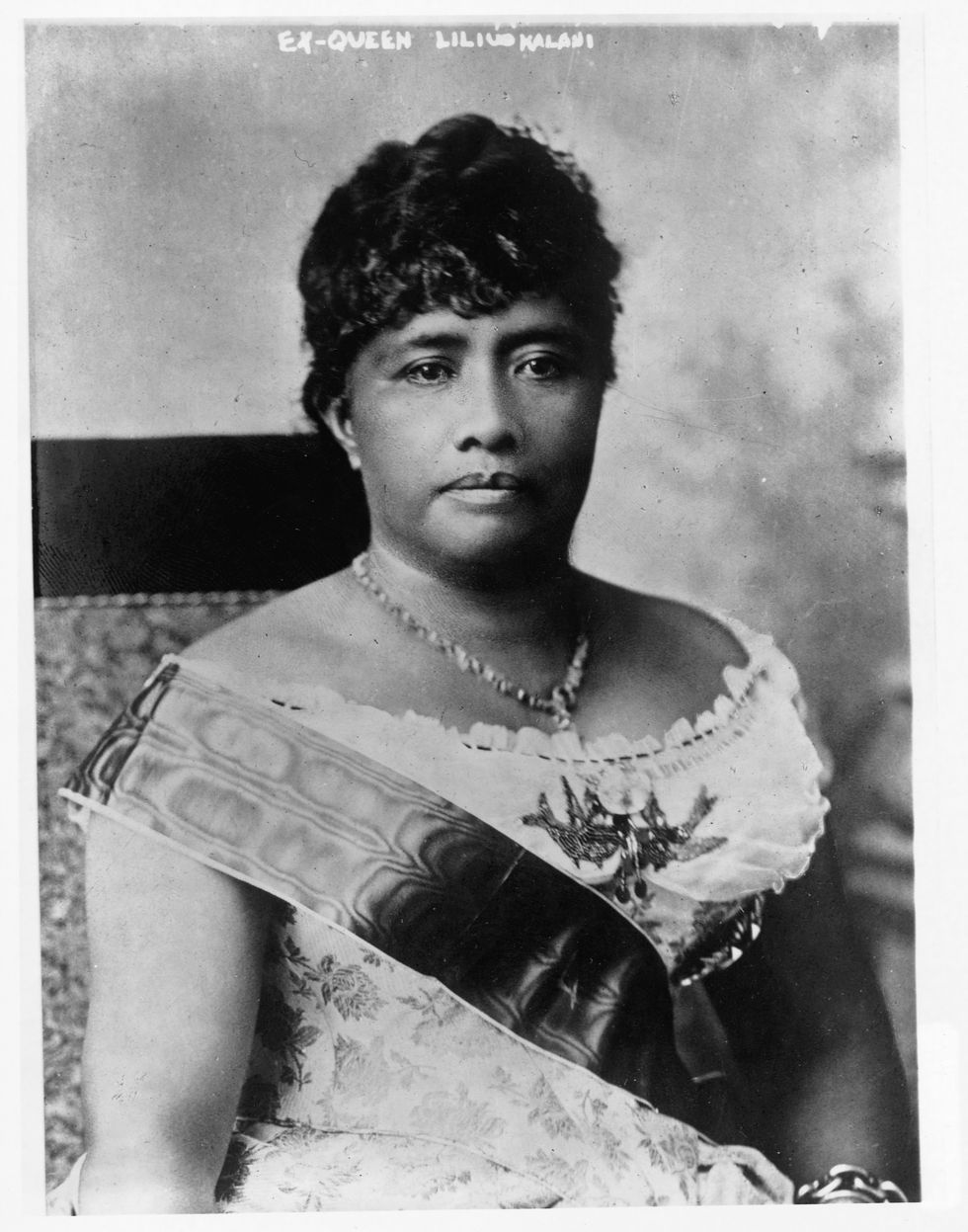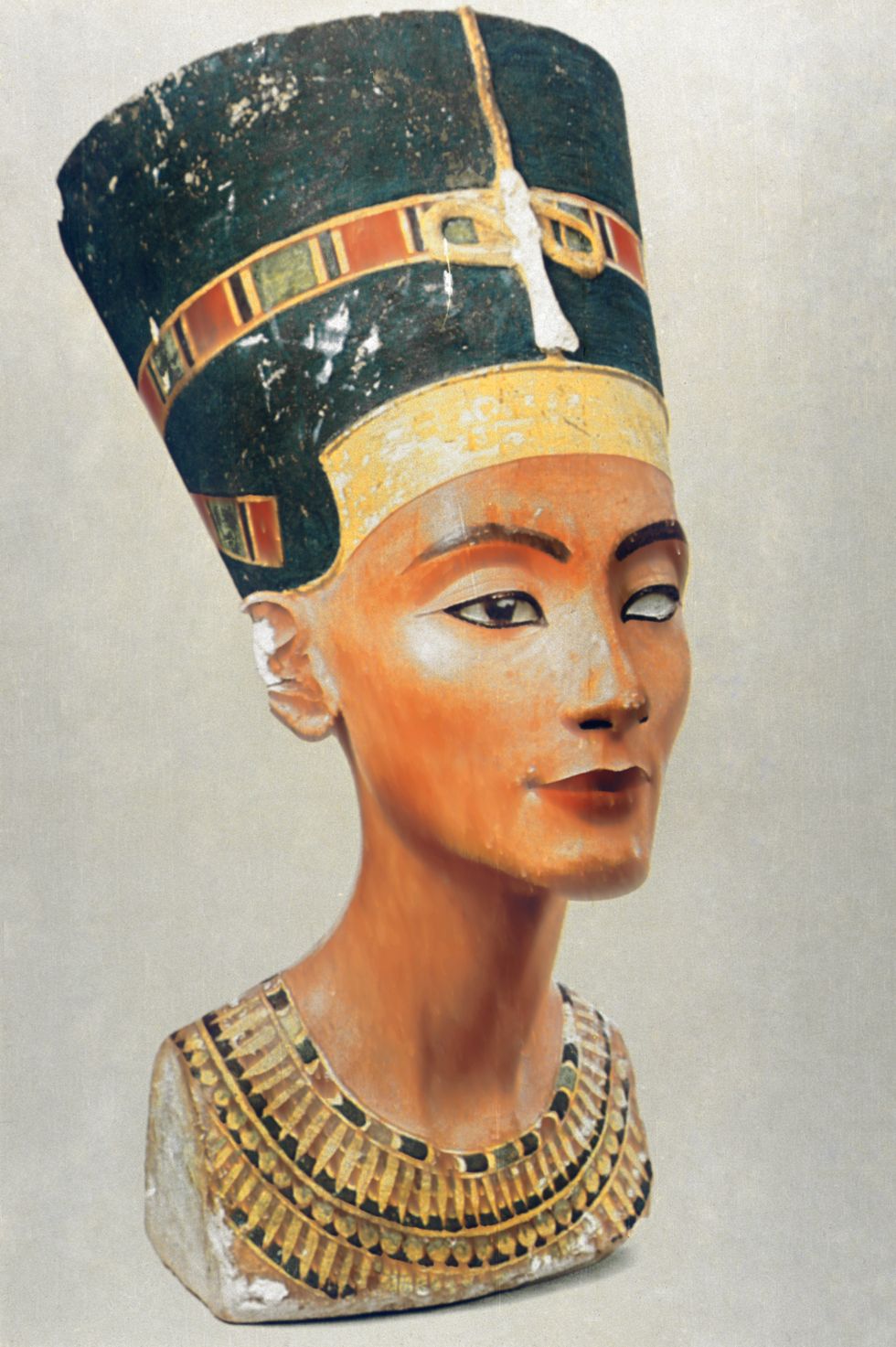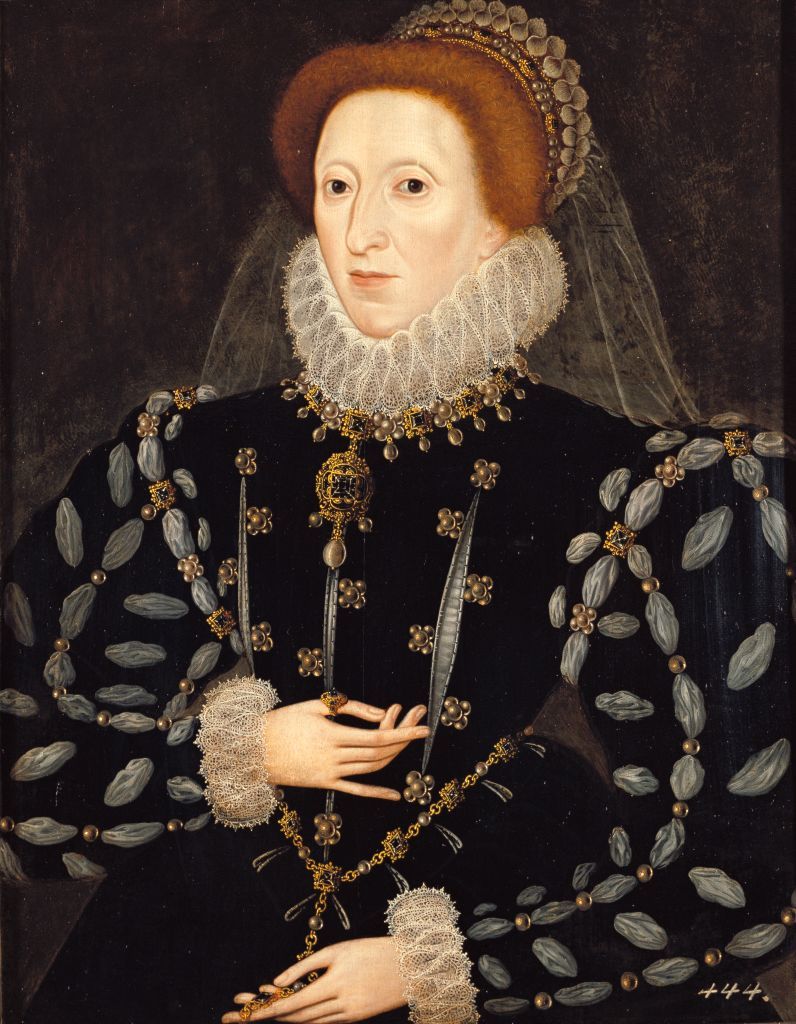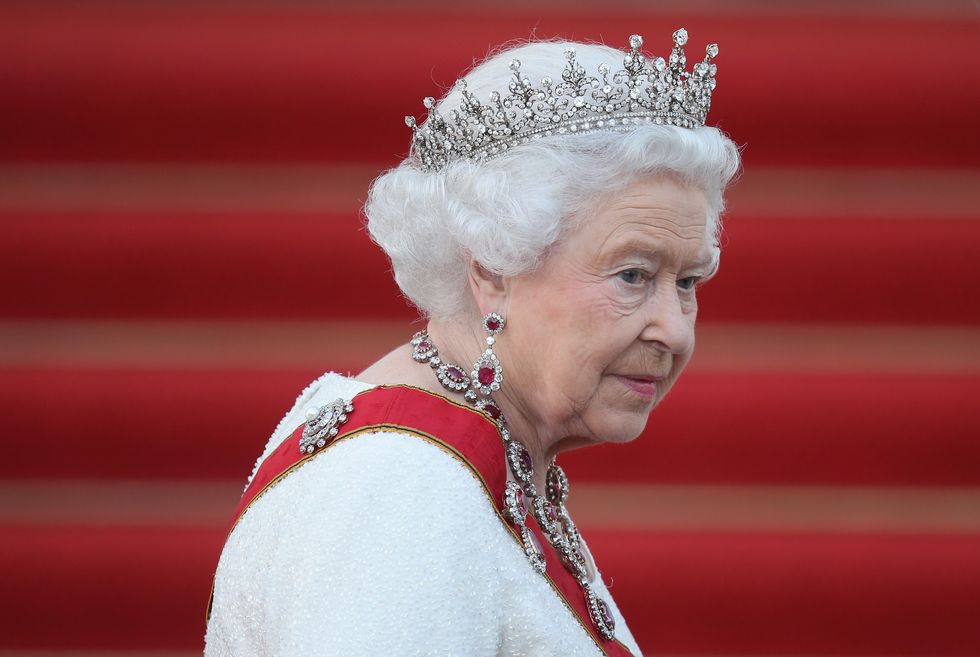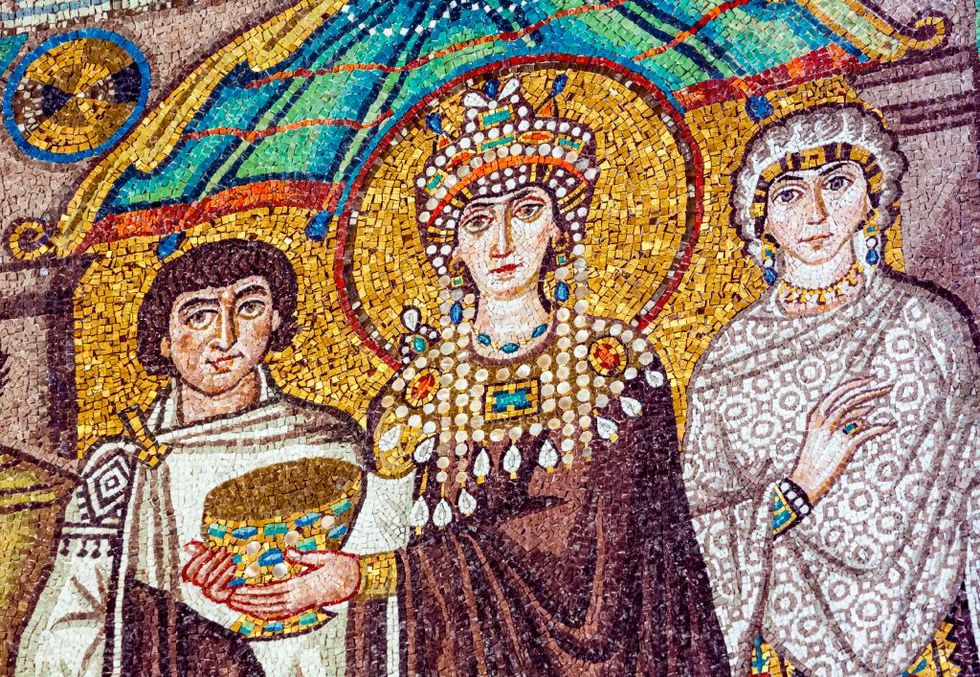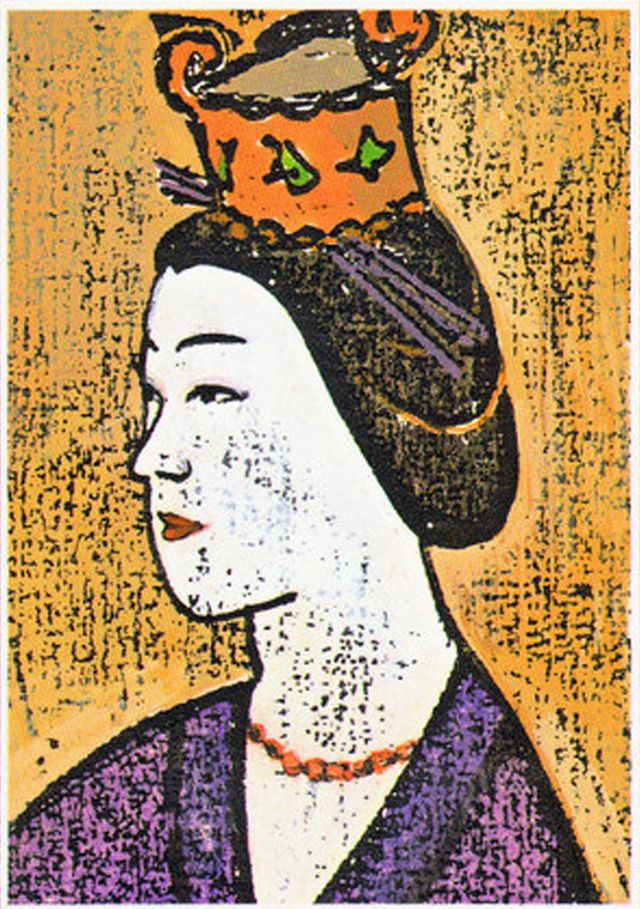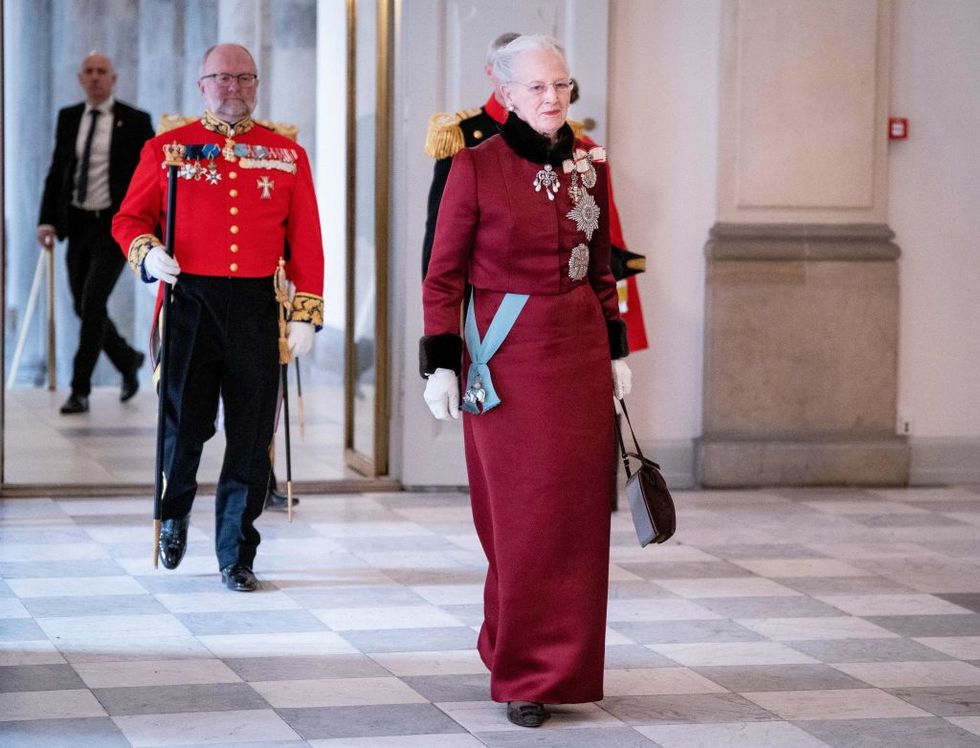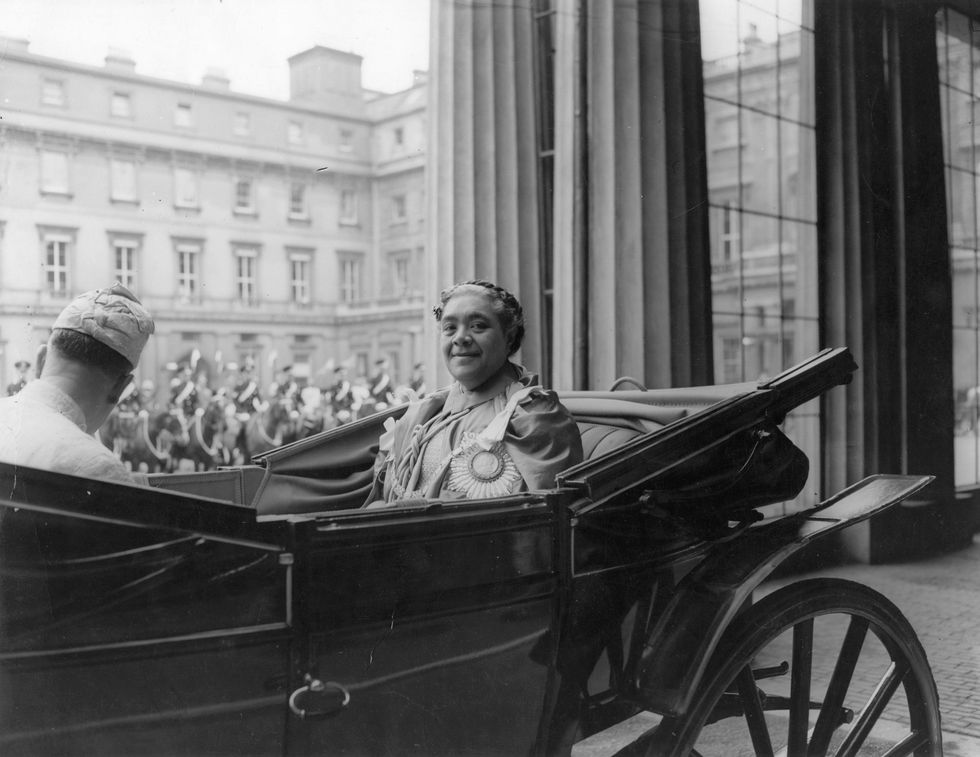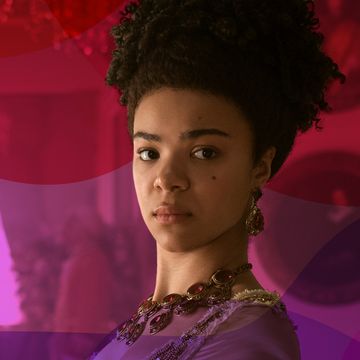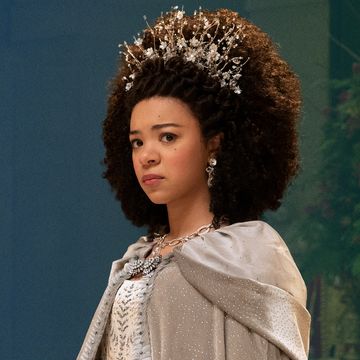Fans of Bridgerton have come to know our beloved Queen Charlotte as a benevolent leader — even if she does have a penchant for gossip and expensive taste in jewelry. And though the Queen Charlotte of the Bridgerverse isn’t exactly historically accurate, she has nevertheless inspired her audiences, thanks in large part to the exhilarating performance of Golda Rosheuvel in the Bridgerton series and soon in the queen’s royal origin story, Queen Charlotte: A Bridgerton Story, which also stars India Amarteifio as the young queen.
As we draw nearer to the new series’ premiere on Netflix on May 4 and a chance to go deeper into what made Queen Charlotte the queen she was, we thought it pertinent to give shout-outs to some other inspirational queens throughout history. These 12 rulers are hardly the only names worth mentioning, but their time in power is important to celebrate just as much as that of any other world leader. Because whether they ruled in their husband’s stead, by his side, or completely on her own, these great women exerted influence over entire countries and in turn, our world’s history.
Empress Dowager Cixi
Born in 1835 in Beijing, the Empress Dowager Cixi effectively ruled China for nearly 50 years until her death in 1908. In her adolescence, she was selected as a concubine for the Xianfeng Emperor of the Qing dynasty. As such, she gave birth to a son, Zaichun, in 1856. Only five years later, the emperor died, making the young boy the Tongzhi Emperor, and Cixi assumed the role of co-empress dowager in 1861, alongside Xianfeng’s widow, Empress Dowager Ci’an. Cixi is known as a cunning woman with a gangster-like mentality that has made her a controversial figure in historical textbooks — which seems about right for a woman who dominated China’s court and policies during its last imperial dynasty.
Catherine the Great
Catherine II, known as Catherine the Great, was indeed one of the great world leaders of the 18th century. After overthrowing her husband, Peter III in 1762, she ruled Russia for 34 years with a fairer hand than most royals and an open mind. Until her death in 1796, Catherine the Great invited politics and culture from beyond Russian borders, helping to modernize (and westernize) the country’s place on the world stage.
Nzinga of Ndongo and Matamba
Nzinga (sometimes written Njinga) became queen over the Ambundu kingdoms of Ndongo in 1624 and Matamba in 1631 (both located in modern-day Angola) after both her father, the king, and her brother died. She was born from a woman who was her father’s favorite concubine slave and ended up fighting for her nation’s independence from the Portuguese, who ravaged her kingdom’s territories with the slave trade. She ruled until her death in 1663 and is only now being remembered for her intelligence, diplomacy, and military tactics.
Queen Liliʻuokalani
Though she ruled for only two years, Liliʻuokalani was the last sovereign monarch of the kingdom of Hawaii. She took over from the king, her brother, after his death in 1891 — but the change of power occurred during a takeover by American businessmen supported by the U.S. military and backed by the U.S. government. By 1893, she was no longer queen and was eventually placed under house arrest after her supporters attempted an insurrection in 1895. Liliʻuokalani was a fierce fighter to preserve native Hawaiian rights and tradition, and her legacy of songwriting, philanthropy, and women’s and children’s advocacy is still felt today on the islands of Hawai’i.
Nefertiti of Egypt
While Cleopatra (69 BC-30 BC) is well known for her influence at a crucial time in Roman politics in Egypt, Nefertiti was more than just a woman of incredible beauty, as she’s often described. Ruling Egypt alongside her husband, Pharaoh Akhenaten, from 1353 to 1336 BC, Nefertiti was a key player in royal politics and the shift from polytheistic religion to monotheism. Since her famous bust’s discovery in 1911 by archaeologists, more has been learned about her upbringing and effect on Egypt’s culture at the time. She was renowned for her beauty, but it was the bearing of six children that helped solidify her place as goddess of fertility in the history books.
Elizabeth I
The last monarch of the House of Tudor, Elizabeth was the queen of England and Ireland from 1558 to 1603. She was often known as the Virgin Queen, as she never married — against the court’s wishes, of course — but Elizabeth’s rule was anything but innocent. The daughter of Henry VIII and Anne Boleyn, Elizabeth, who died at 69 (considerably old for the time), had a long, robust rule. She ushered in the restoration of Protestantism, executed her Catholic cousin, Mary, Queen of Scots, and led England in its defeat of the Spanish Armada.
Elizabeth II
The second Elizabeth had far less bloodshed in her time as the queen of England from 1952 to 2022. The longest-reigning monarch in British history — and the second-longest ever, after France’s Louis XIV — Elizabeth II was, for the most part, incredibly popular with the public for nearly all of her reign. She was known for taking a serious interest in parliamentary affairs, even if her input was not meant to impede government and political affairs. She is also credited with modernizing many aspects of the monarchy and creating the Commonwealth in an attempt to part with Britain’s colonial past.
Empress Theodora
Theodora, born of modest means in the 6th century, ended up marrying Emperor Justinian I and co-ruling the Eastern Roman Empire from 527 until her death in 548. Theodora, who worked as an actress (scandalous for the time) to make money for her family after her father’s untimely death, grew to be one of the most powerful women in Byzantine history and used her influence to promote religious and social policies that she believed in, like recognizing and championing women’s rights — one of the first rulers on record to ever do so.
Empress Suiko
In Japan, Suiko was the first of what would be eight women to become empress regnant (queens who rule in their own right), ruling the island nation from 593 to 628. Ascending to the throne at the age of 41 after the deaths of all the men in line before her, Suiko was one of the first Buddhist monarchs in the country. She strengthened ties with China and Korea and not only adopted the Chinese sexagenary cycle calendar — historically used to keep time in the East Asian sphere — but she also retired the Japanese method of governmental bureaucracy and established the Chinese system instead, strengthening the total supremacy of the emperor.
Margrethe II
Queen Margrethe is not only Denmark’s queen, but since beginning her reign in 1972, she has also been monarch for more than 50 years, making her Europe’s longest-serving current head of state. And as of 2023, she is also the world’s only queen regnant, at 82 years old. A thoroughly modern queen, Margrethe II is approachable and affable. Nicknamed the “Ashtray Queen” because of her admittedly nasty habit of chain-smoking cigarettes, Margrethe is an eternal student who loves to dress brightly (like her third cousin, the late Queen Elizabeth II, the only thing they had in common other than their queendom) and designs and makes costumes and scenography for European stage productions. She is highly educated, revels in archaeology, and is fluent in five languages.
Rania Al-Abdullah
Rania was born in Kuwait to Palestinian parents, and it was because of her family fleeing the Gulf War in 1991 that Rania met her husband-to-be, King Abdullah II. Marrying only two years later, Queen Rania now rules over Jordan with her husband, championing many causes close to her heart, including the rights of women and children, access to education, and the protection of the environment. Cross-cultural dialogue has also been important to the queen of Jordan, who has fostered community empowerment between Jordanians and their neighbors.
Sālote Tupou III
It is rarely recounted in beloved World War II movies, books, podcasts, and the like, but the queen of Tonga declared war on Germany in 1940 and on Japan in 1941 and led her country into battle, giving resources to Britain and supporting the Allied cause throughout the war. After the death of her father, King George Tupou II, in 1918, Queen Sālote ruled Tonga for 47 years — longer than any other Tongan monarch — until her own death in 1965. She was a beloved ruler in her kingdom and became more internationally known when she traveled to England in 1953 to attend the coronation of Queen Elizabeth II.
Valentina Valentini is a London-based entertainment, travel, and food writer and is also a senior contributor to Shondaland. Elsewhere, she has written for Vanity Fair, Vulture, Variety, Thrillist, Heated, and The Washington Post. Her personal essays can be read in the Los Angeles Times and Longreads, and her tangents and general complaints can be seen on Instagram at @ByValentinaV.
Get Shondaland directly in your inbox: SUBSCRIBE TODAY
